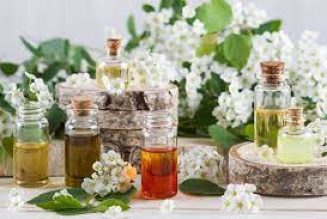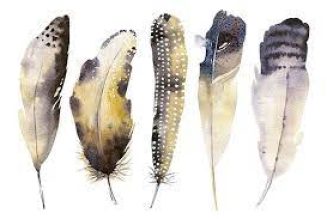Basil has been called “the Witches Herb” for centuries. Basil has been used for exorcism, protection, in “flying ointments”, and love potions. “Where Basil grows, no evil goes!” and “Where Basil is, no evil lives,” goes the old adages. Basil, given as a gift, will bring good luck to a new home. Sprinkled around the house, it wards off evil. Soak it in water for three days and sprinkle the water at your doorstep to bring money and success, drive away evil, and have a happy family. add this to the water for scrubbing and cleansing the floors and walls. AFTER moving in, and regularly dried Basil should be sprinkled on the kitchen floor and swept out the door. If possible a basil plant should be planted near the home (or inside in a pot) to bring protection and good fortune to everyone who lives inside. If you have a job interview coming up, you can sprinkle this outside of the building where you hope to be employed (careful though if someone sees you it won’t help your job prospects very much!). To increase love in the home, use it in cooking or keep some in an open bowl in the kitchen and replace it each week. Mixed in a bath with love herbs (such as red clover, rose buds, catnip, gentian, damania, lavendar, cubebs, and juniper berries ), it increases affection in the family. Basil also protects from evil. Mix with rosemary and rue for a cleansing and protective bath. Pour the water into your bathwater, and rest in the water for 20 minutes allowing the essence of the herb to coat you to provide protection from negative energy. Imbolc is the traditional time of year for initiations and the initiate should have been taking daily tonics of basil for at least the last two weeks. It is given now to prepare the innerself for initiation to bring fortitude. In situations where you feel you will need protection, steep a teaspoon of fresh basil in one cup of boiling water. Let the basil steep for 5-10 minutes, than strain the herbs from the water. Basil oil rubbed on a green candle before burning will attract wealth. The incense smoke is beneficial for the same, as well as for banishing, exorcising and protection. Oil of basil helps fight colds, coughs, cramps, fever, anxiety, and much more. Basil is a stimulating and antidepressant oil which relieve can mental fatigue, clear the mind, and improve concentration. It is an expectorant and antiseptic, used for all types of chest infections. It’s also good for congested sinuses, chronic colds, head colds and whooping cough. The antispasmodic and carminative properties of basil help to relieve abdominal pains, indigestion, and vomiting. It works well on tired muscles, especially in massage oil used after hard physical work or strenuous exercise, it also eases arthritis and gout. It is reputed to be one of the best nerve tonics among all essential oils. Forget the Prozac, Basil can be used for the relief of depression – but over use will cause depression. Avoid if pregnant. Good for respiration conditions, such as Asthma and Bronchitis. As it has an effect upon Adrenal Cortex it can be effective with allergies. Sweet Basil is great for aiding concentration and sharpening the senses. Basil has been known and grown since ancient times. Back in the first century AD, the Greek physician Dioscorides believed basil dulled the sight and produced “wind.” According to Gerard in his Herbal published in England in the 1600s, the smell of basil was “good for the heart and for the head.” Gerard also advised that the juice of the plant was good against headaches, if it were drunk with wine, and was useful in clearing up diseases of the eye. In Italy, a pot of basil on your balcony means you are ready to receive suitors. In India, the herb is dedicated to Vishnu and is given to the dead to help ensure their entrance to the afterlife. Prostitutes used to wear it in Spain to attract business. believed to have derived its name form the Basilisk, the fabulous dragon-like creature that was deadly to anyone who looked at it. This may have spawned the old belief that Basil begot scorpions. Some claimed it bred scorpions and that scorpions would be found beneath a pot where basil grew—a belief that arose, perhaps, from the prevalence of scorpions in some of the tropical regions of Asia and Africa, where basil originated, and their predilection for warm, dark places. Gerard wrote that those who were stung by a scorpion would feel no pain if they had eaten basil. Culpepper, a contemporary of Gerard, suggested in his Herbal that basil would draw out the poison of venomous beasts, wasps or hornets. Basil made its way to Europe by the Middle Ages and to England and America in the mid-17th century, where it was used mainly medicinally. It was not until the 19th century that basil became the ever-present component of herb gardens that it is today. Basil is also very important in Asia and Asian cuisines. The range of basils available is the result of the variability of the species, basilicum. The species contains a natural diversity of fragrances and colors; plant breeders have selected for and improved on these different traits. Growing From Seed Whether you sow seeds indoors or out, remember that basil does not like cold or even cool, weather. Sow the seeds outdoors when day and night temps reach about 55 to 60 degrees. When sown or transplanted at the right time, basil is one of the easiest herbs to grow successfully. Starting Basil Indoors Plan to sow seeds 4 to 6 weeks before the date of your average last frost in spring. Basils do not need a long time to grow large enough to transplant to the garden.
- Fill a shallow container, or flat, or individual 2- to 21/4-inch pots with a commercial seed-starting mix. Moisten the mix and let it drain.
- Sow the seeds in rows in a flat or two to three seeds per pot. Cover the seeds with about 1/4 inch of the mix. Press the mix down lightly and spritz the surface with water to moisten it and settle the seeds.
- To keep the mix from drying out while the seeds are germinating, cover the containers with sheets of clear plastic wrap, or place each in a plastic bag and close it with a twist-tie.
- Set the containers in a warm location; the growing medium should be at about 70-75 degrees F (21-23 degrees C). Seedlings will emerge in 4 to 7 days. When they do, remove the plastic covering and place the containers in bright light or direct sun in a south-facing window or a fluorescent light garden. Give the containers a quarter turn every few days so the plants grow straight instead of leaning towards the light source.
- Keep the mix evenly moist by watering from the bottom: Set the containers in a sink filled with a couple of inches of water until beads of moisture appear on the surface. A liquid fertilizer at one half the recommended rate can be given to seedlings to promote healthy plants.
- When the seedlings are about 2 inches tall and have at least two pairs of true leaves, transplant those in flats to individual pots. Thin those started in small pots to one per pot by snipping off all but the strongest looking one with a scissors. It is not necessary to transplant purple-leaved basils, such as `Dark Opal’ and `Purple Ruffles’, if you sow them about 1/2-1 inch apart.
- If young plants become tall and spindly, the growing tip can be pinched to encourage branching and compact growth. Some of the smaller basils, such as `Spicy Globe’, have a naturally branching habit and do not need to be pinched.
Sowing Directly in the Garden. Sow seeds in the garden when the soil has warmed up to about 55 to 60 degrees day and night temperatures. Sow the seeds about 1/2 inch deep in good garden soil; if you cover the seeds with less soil, they may float to the surface after a heavy rain. Basil germinates readily, therefore you do not need to sow thickly. You can sow the seeds in rows or in groups; drop two to three seeds in each hole for the latter. Keep the seedbed moist until germination occurs. When the seedlings have at least two pairs of true leaves and are 2 to 3 inches tall, thin them to stand 10 to 30 inches apart, depending on the species or cultivar. Begin pinching out the growing tips for compact growth when the seedlings are 3 to 4 inches tall. To have an uninterrupted supply of fresh basil, most gardeners sow basil seed several times during the growing season. The National Garden Bureau recommends sowing basil seed every 3 to 4 weeks to harvest fresh leaves for culinary uses.Garden Uses Basil is as ornamental as it is edible. Put it in a traditional herb garden, in the vegetable plot in the center of a bed of red- and green-leaf lettuces or edging a bed of tomatoes. Use both the green- and purple-leaved varieties in borders; the latter are especially beautiful with perennials such as coral bells (Heuchera `Palace Purple’), Sedum `Vera Jameson’, fountain grass (Pennisetum), dusty miller, and blue Salvia farinacea. Both combine well with annuals, such as dwarf or medium-height snapdragons, nicotiana, French marigolds, and petunias. With its natural round shape, the dwarf basil `Spicy Globe’ makes a wonderful edging for any type of garden: perennial, rose, or herb. Try the old-fashioned technique of keeping flies away by planting basils around a patio or in containers on a deck. Taking Care of Basil Like most herbs, basils do not require much maintenance. In sandy or infertile soil, fertilize basil plants for continuous growth. If you amended the soil with organic matter, you may not need to fertilize basil. Basil plants need about an inch of water a week. Water, if rain does not provide for the plant’s needs. Although the flower spikes are attractive, it is recommended to cut them off as they deplete the plants’ energy resulting in fewer leaves. The leaves have the best flavor—the most essential oils—when they are harvested before the plants flower. Cut whole stems rather than individual leaves, especially if you want to use the leaves as a garnish because they bruise easily. Cutting whole stems is a tasty way of creating a bushy, compact plant: Cut just above a pair of lower leaves; the plant will produce new shoots at that point. Growing in Containers Basils are excellent herbs to grow in containers because they add such attractive colors and textures to the plantings. They look good in pots or window boxes in full sun. A container of basil by the back door or on a deck provides easy access for harvesting! The container should have drainage holes in the bottom or sides. Fill it with a soilless mix, which is more lightweight than garden soil and is also free of diseases and weed seeds. It is easy to provide nutrients all season by incorporating a controlled-release fertilizer in the mix before planting. With mixed plantings, place most basils near the center of containers or at the ends of window boxes. Use dwarf basils to edge a container planting or on their own in smaller, 8-inch pots, and place the pots around a larger planter, marching up steps, or along a walk. Basils combine well with other herbs and with annuals. Plant basils at the same level as, or just slightly deeper than, they were growing in their original pots. Water the container well after planting. Keep the plants evenly moist through the growing season; the roots of any plants in a container cannot reach down or out in search of available moisture. Smaller containers will require more frequent watering than large ones. If you plant in a window box, remember that overhanging eaves may prevent rain from reaching the plants. Because it can overwinter in the soil, don’t plant basil in the same location every year. Avoid excessive watering and provide proper drainage From Garden to Kitchen One of the most useful herbs – a key ingredient for many Italian and Indian dishes and great when fresh in salads. The ‘fresh-from-the-garden’ taste is far tastier than the dried variety. Basil complements many kinds of dishes and combines well with other herbs, whether used fresh or dried. The flavor and appearance of the leaves are best fresh. Many gardeners are unable to eat their fresh, homegrown tomatoes without fresh basil and a dash of premium olive oil. Freshly harvested basil leaves added to mesclun or lettuce salads liven up the flavors. Pesto is another favorite use for basil. Create the classic pesto sauce, a combination of basil, garlic, olive oil, pine nuts, and freshly grated Parmesan cheese. Whip up basil butter. Cream together one stick of unsalted butter and 1-3 tablespoons of dried, crushed basil or 2-6 tablespoons of fresh, minced basil. Place in a covered container or roll into a cylinder-shape and refrigerate for at least an hour before using. Make basil vinegar to use in salad dressings. Heat vinegar (any type) in an enamel pan; pour it into a bottle and add several sprigs of basil. Let set for 2 weeks before using. If you have any basil left at the end of the growing season consider drying the leaves. To dry basil, cut the entire plant and hang on a string in a well ventilated room. When dry, just pluck the leaves from the stems and store in airtight jars out of direct light. Windowsill Plants It is easy to bring container-grown plants inside, but you can also pot up a few plants from the garden. Cut them back rather severely—to about 3-4 inches tall—so they will put out new growth when they become acclimated to the indoor environment. Grow them on the sunniest windowsill you have, preferably with a southern exposure, or put them in a light-garden. Keep the soil evenly moist and fertilize them once a month. Because basils are so easy to grow from seed, however, the National Garden Bureau recommends it is just as simple to sow fresh seed indoors at the end of the outdoor growing season. Pot the seedlings into individual 4- to 6-inch containers and enjoy fresh basil all winter harvested from your windowsill.






















